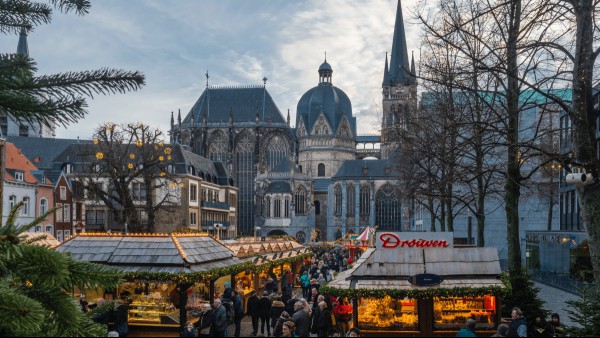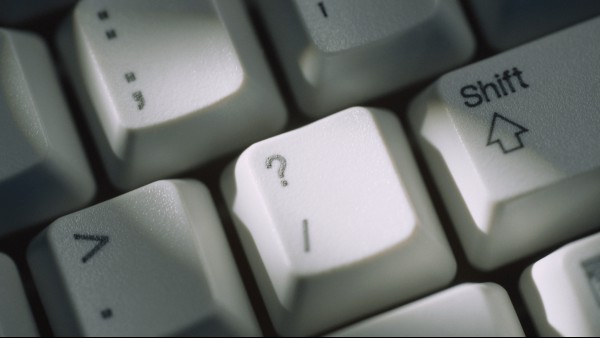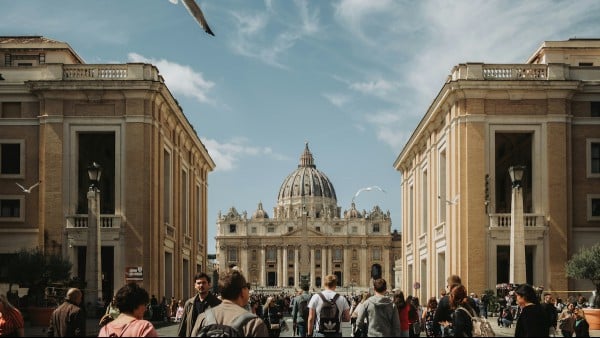LGBTQ+ Language And The Search For All-Inclusive Words
Lesbian. Gay. Bisexual. Trans. Queer. Questioning. Intersex. Asexual. Pansexual. Non-binary. The list of terminology for various sexual orientations and gender identities is ever-expanding, and our understanding of these identities continues to grow. LGBTQ terms and queer language have come a long way from an often dark and closeted past, but the search for inclusivity in how we talk about queer communities goes on. (In fact, even describing LGBTQ+ people as a “community” has its own associated issues.)
In 2024, there’s still no set standard for how to address groups. The issue is only complicated by increasing attacks on people — particularly trans people — in the United States, United Kingdom and other countries around the world. How do we make sure this wide array of identities is represented and discussed in a way that’s inclusive? Let’s start with a look at the history of LGBTQ terms and work our way to the present state of the conversation.
The History Of LGBTQ Terms
The earliest term used to describe what we would consider a modern queer identity was “homosexual,” which is thought to have been coined by a German writer in 1869 (notably, exactly 100 years before the Stonewall Riots). Some people preferred to use the word “homophile” (literally “love of the same”) to shift the focus to love rather than sex.
The word “gay” didn’t arrive until the 1900s. This term moved from meaning “happy” or “cheerful” to signifying same-sex attraction, starting as a somewhat underground term and then becoming popularized in the 1960s and ’70s. When it made it into the mainstream, “gay” was used as an umbrella term for the entire equality movement.
The term “lesbian” is derived from the Greek island of Lesbos, which was the home of the poet Sappho, who was known for her writings about erotic and romantic relationships between women. Use of “lesbian” to describe women interested in other women came shortly after, during the height of the women’s rights movement, when gay women wanted a way to linguistically differentiate themselves from gay men.
Later in the 20th century, the terms “transgender” and “bisexual” started to be regularly used, which led to the LGBT acronym. Previously, transgender people were referred to as “inverts,” “transsexuals” or “transvestites,” all of which have specific meanings that are not inclusive of the overall trans community. If those terms weren’t used, trans and bisexual folks were folded under the “gay” umbrella. Around the turn of the 21st century, the “Q” (for “queer” or sometimes for “questioning”) started to appear at the end of “LGBT” to stand in for even more identities.
It’s also worth noting that the story of these English terms is only one of the many out there. Each language has its own set of terms used by people who identify somewhere on the LGBTQ spectrum. As in other areas, English does play an outsized role in affecting other languages’ LGBTQ terms, but there are a whole array of words — some of which don’t have equivalents in English — that people use for describing themselves and others.
Creating Inclusive Language
The introduction of LGBTQ terms was an important turning point for inclusivity, but there were, and still are, plenty of people who feel left out of this acronym. This has led to attempts to lengthen the acronym further. Examples of this include LGBTQIA (adding “intersex” and “asexual”) and even LGBTQQIP2SAA (which adds “questioning,” “pansexual,” “two-spirit” and “ally”).
At what point does the acronym become too long and unwieldy to serve its purpose? That’s where the heart of the discussion lies.
JR “Nexus” Russ, communications manager for the National LGBTQ Task Force, says it’s a matter of defining members of the queer community as something more than just “other.”
“We do not and should not ever describe ourselves by what we are not, but by what we are,” Russ explains. “And as we dive deeper in the nuance and complexity of identities regarding gender identity and sexual orientation, it makes sense that members of our community who do not find existing language sufficient explore and create new language.”
Dr. William Leap, professor emeritus of anthropology at American University and co-editor of the Journal of Language and Sexuality, echoes this sentiment: “I think it’s part of a thing in English and other Indo-European languages, which says something is real when you can put a name to it.”
For older members of the LGBTQ+ community, the introduction of clear and inclusive language was particularly profound. “One of the things that you hear constantly is, ‘I never knew there was a word for it. And then I found out there was a word for it,’” Leap said.
Labeling, to some extent, is important, but how do we make sure it’s helpful rather than harmful? Russ believes the solution lies in who does the labeling.
“It is important, not just to have specific terminology and language for queer identities, but that it be by people of queer identities,” Russ said. “‘Nothing about us, without us’ is a slogan that comes to mind, and I think this is the difference between language being beneficial or harmful.”
One Term To Rule Them All?
When it comes to LGBTQ terms, it seems clear that the best approach to inclusive terminology is allowing members of the community to decide their own labels. But it becomes more complicated as we learn about new — or more likely previously misunderstood — identities, making it increasingly harder to fit all of these different groups under one enormous umbrella term.
What about “queer”? Is that word broad enough to cover all of the sexual orientations and gender identities we want to include? Perhaps, and many LGBTQ+ people have started to use “queer” as a catch-all term. But for older folks, who remember the not-so-distant past when “queer” was a homophobic slur, it may not feel like a great solution.
“In some ways, [‘queer’] may be the best term to use because theoretically, that term can be positioned to include a whole lot of things,” Leap says. “But there are a lot of folks that just don’t like the term because it brings back memories of other unpleasant things.”
Others have settled on using LGBTQ+ — the plus sign indicating that the term is inclusive of any other identity not included in the acronym. But the plus-sign can lead to feelings of exclusion by groups whose identity doesn’t get a letter.
For Russ, the discussion should go beyond just asking how many letters we should affix to the end of “LGBTQ.”
“Ultimately, the way to be inclusive is to make sure that people who identify with different sexual orientations and gender identities that may not be represented by those five letters are seen and heard, as well as given room to lead,” Russ says. “Because they will know best what makes them feel excluded, and the steps we as a community need to take to make them feel not just included, but welcome, whether in physical or even digital spaces.”
RECOMMENDED NEWS

A Pronunciation Guide To The Indonesian Alphabet
Learning the alphabet is allegedly easy. So easy, people will compare other things to it to say how ...

How To Talk About The Home In Russian
Want an easy way to practice your vocabulary? Just look around you. While it’s a bit cliché, putting...

Festive Traditions That Show There’s No Christmas Like German Christmas
Every country has its own holiday traditions, each of which are unique and wonderful in their own wa...

An English Punctuation Review
Is English punctuation really all that important? Let’s look at this classic written joke: “Let’s ea...

15 Terrifying Boogeymen From Around The World
Every country has a long, rich tradition of invoking supernatural threats in order to keep kids in l...

The Language Of Vatican City: A Unique Linguistic Mosaic
Vatican City, the world’s smallest sovereign state, is both a global religious center and a function...
Comments on "LGBTQ+ Language And The Search For All-Inclusive Words" :